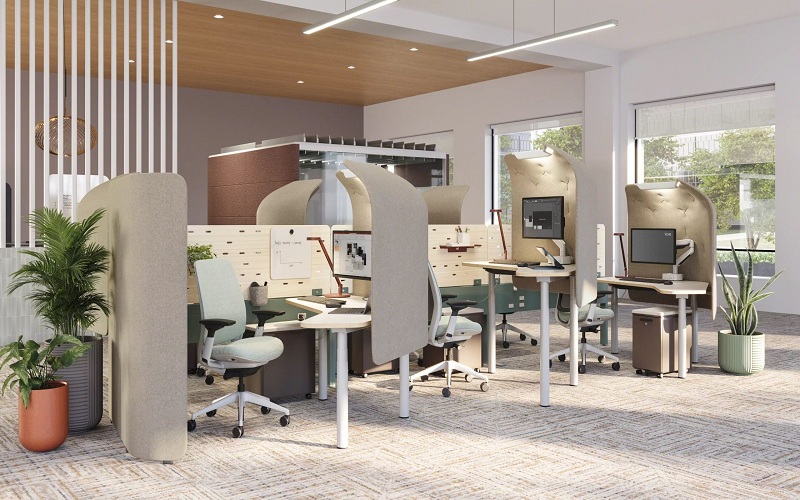Ensuring Accessibility and Universal Design Principles in Home Construction
Creating a home that is accessible to people of all ages and abilities is not only a matter of convenience but also a fundamental aspect of inclusive and equitable living. Whether it’s accommodating mobility challenges, sensory impairments, or ageing in place, incorporating accessibility and universal design principles into home construction ensures that everyone can navigate and enjoy their living space comfortably and safely. From working with an established house construction company to managing house construction costs in Bangalore, prioritising accessibility features and universal design elements can transform homes into welcoming environments that promote independence, dignity, and well-being for all occupants. Let’s explore the importance of accessibility and universal design principles in home construction and how they can be integrated into the building process.
Understanding Accessibility and Universal Design:
Accessibility refers to the design of products, environments, and services that can be used by people with disabilities, ensuring equal access and opportunities for participation. Universal design, on the other hand, goes beyond accessibility by creating environments that are usable and enjoyable by people of all ages, sizes, and abilities, without the need for adaptation or specialised design features. By incorporating both accessibility and universal design principles into home construction, builders can create living spaces that are inclusive, adaptable, and responsive to the diverse needs and preferences of occupants.
Key Features of Accessible and Universally Designed Homes:
- Access ramps and stair lifts: Installing access ramps and stair lifts provide individuals with mobility impairments or physical disabilities with barrier-free access to different levels of the home, ensuring independence and freedom of movement.
- Wider doorways and hallways: Designing wider doorways and hallways allows for easy navigation and manoeuvrability, accommodating mobility aids such as wheelchairs, walkers, and scooters.
- Zero-step entries: Incorporating zero-step entries eliminates barriers and trip hazards at entry points, making it easier for individuals with mobility challenges or mobility aids to enter and exit the home safely.
- Accessible bathrooms: Designing accessible bathrooms with roll-in showers, grab bars, adjustable-height fixtures, and non-slip flooring ensures comfort, safety, and convenience for individuals with mobility impairments or disabilities.
- Adaptable kitchens: Creating adaptable kitchens with adjustable countertops, pull-out shelves, and lever-handle faucets allows for easy access and usability for individuals with limited mobility or dexterity.
Benefits of Accessible and Universally Designed Homes:
Enhanced quality of life: Accessible and universally designed homes promote independence, autonomy, and dignity for occupants of all ages and abilities, allowing them to live comfortably and safely in their own homes.
- Ageing in place: By incorporating accessibility features and universal design principles into home construction, homeowners can create environments that support ageing in place, allowing them to remain in their homes as they grow older and their needs change.
- Increased property value: Accessible and universally designed homes appeal to a broader range of potential buyers and renters, increasing marketability and resale value in the long term.
- Compliance with regulations: Adhering to accessibility standards and building codes ensures compliance with regulatory requirements and mitigates the risk of fines, penalties, and legal liabilities.
Integrating Accessibility and Universal Design into Home Construction:
Collaborate with experienced professionals: Work with architects, designers, and builders who have expertise in accessibility and universal design principles to ensure that your home construction project incorporates the appropriate features and considerations.
- Consider lifecycle needs: Anticipate the changing needs and abilities of occupants over time and design spaces that can adapt to evolving circumstances, such as ageing, injury, or disability.
- Prioritise safety and usability: Emphasise safety, comfort, and usability when selecting materials, fixtures, and finishes for your home construction project, choosing options that are durable, easy to maintain, and accessible to all occupants.
- Plan for flexibility and adaptability: Design spaces that can accommodate a variety of activities, preferences, and lifestyles, allowing occupants to customise their living environment according to their individual needs and preferences.
- Incorporate feedback and input: Solicit feedback and input from occupants, caregivers, and accessibility experts throughout the design and construction process to ensure that the final result meets the needs and expectations of all stakeholders.
In conclusion, ensuring accessibility and universal design principles in home construction is essential for creating inclusive, adaptable, and welcoming environments that promote independence, dignity, and well-being for all occupants. By incorporating accessibility features and universal design elements into the building process, homeowners can create living spaces that are accessible, usable, and enjoyable for people of all ages and abilities. Whether you’re working with a reputable house construction company or managing house construction costs in Bangalore, prioritising accessibility and universal design principles can transform houses into homes that are truly inclusive and supportive of diverse lifestyles and needs.

